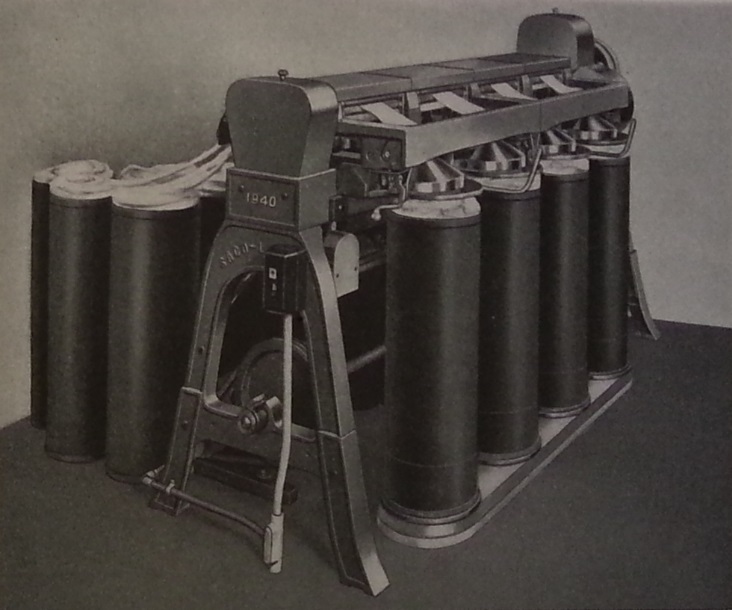
Mass production has been recognized as an indispensable part of industrialization in standard accounts of economic development. Characterized by endless rows of machines tended by “unskilled” workers, this unprecedented system has been perceived as an emblem of a new era in which human skills are replaced by machines, handicraft by manufacture, and tradition by modernity. And yet, careful examination of the construction of cotton spinning mills—a typical manufacturing sector of any industrializing society—reveals an unknown dimension of the system. Charting the troubled process of ordering, installing, and operating American textile machines in Chinese cotton mills, my research shows that each of these machines was modified in endless ways to suit the local mill’s conditions, especially regarding the short staple of Chinese cotton. In order to produce standard cotton yarn out of unstandardized cotton fibers, I argue, it was inevitable to devise flexible ways to keep the irregularities under control and machine operatives’ skills, experience, and intuition—often associated with craft knowledge and artisanal work—were crucial to the process. Customized machines were a natural outcome of such efforts to make mass production possible.
Company documents involved in the trans-Pacific machinery business constitute the majority of my primary sources. On the American side, I use documents from Saco-Lowell Shops and Whitin Machine Works, particularly the correspondence between headquarters and engineers dispatched to China and Japan. They provide rich information on technological issues specific to Chinese and Japanese factories; yet, the nature of these sources—full of technical terms—often obstructed a complete grasp of the content. To resolve this methodological issue, I have relied on the manufacturers’ handbooks and catalogs as visual and technical guides. While on my research fellowship at the Consortium, I visited the Smithsonian Libraries and Hagley Museum and Library to read their trade/business literature collections. They indeed answered my numerous questions when reading the engineers’ correspondence as well as contemporary professional journals. I was finally able to begin drafting my most challenging dissertation chapter, which argues for the significance of customization through a case study of the drawing frame—a preparatory textile machine responsible for aligning cotton fibers in parallel.
A close reading of the manuals and catalogs reveals that descriptions of a machine and its parts were followed by a long list of questions for specifications, which future clients were expected to fill out. Some of the questions for the drawing frame, for instance, include: “How many Heads in each Frame? How many Deliveries per Head? Interlocking Metallic or Loose End Leather Covered Top Rolls? Diameter of Bottom Front Roll? Length of Cotton to be used?” By asking its client mills to specify the number and size of each machine and preferred types of required parts, the manufacturer virtually involved them in the design and fabrication process. Given that specifications were provided not only for the drawing frame but for all other machines comprising the production line of a cotton mill, it was possible for the client mill to participate in the planning of the entire factory with detailed ideas for machinery that would best suit its financial, technological, and material conditions. Chinese cotton mills were no exception. Cotton factories sprang up here and there at the turn of the twentieth century, but there was no mass-produced factory.
Local conditions could vary as much as the number of local mills, but what was unique to Chinese cotton mills was the exceptionally short fiber of native Chinese cotton, which American machines initially failed to process. Designed to accommodate American cotton—which has an average staple length that is longer than that of Chinese cotton—American machines had to undergo continued modifications to adjust to this new type of raw material. The work of modification all boiled down to the precise setting of rollers, a key component of any textile machine responsible for parallelizing and attenuating cotton fibers. As Saco-Lowell Shops’ handbook stated, the relationship between staple length and roller setting was “somewhat indefinite,” and roller setting was, after all, “an art requiring many years of practice and observation.” Rollers could be assembled in countless ways by changing their diameter, speed, distance, and the number of gear teeth, depending on the characters of raw cotton to be processed. And the best combination of these factors could be found only by skillful operatives and engineers who had years of experience with local cotton varieties.
 Given the experimental nature of the work, it is no wonder that a better solution was likely to come from local factories—the site where actual experimentation with Chinese cotton took place—rather than the headquarters of manufacturers. Although American manufacturers had accumulated knowledge about roller setting through their decades-long experience with American cotton, Asian factories began to challenge this knowledge system with Chinese cotton, since its existing engineering data failed to address it. In the process of finding optimal roller settings for exceptionally short cotton varieties, a new set of empirical data began to emerge, over which American manufacturers could not necessarily claim authority.
Given the experimental nature of the work, it is no wonder that a better solution was likely to come from local factories—the site where actual experimentation with Chinese cotton took place—rather than the headquarters of manufacturers. Although American manufacturers had accumulated knowledge about roller setting through their decades-long experience with American cotton, Asian factories began to challenge this knowledge system with Chinese cotton, since its existing engineering data failed to address it. In the process of finding optimal roller settings for exceptionally short cotton varieties, a new set of empirical data began to emerge, over which American manufacturers could not necessarily claim authority.
In Saco-Lowell Shops’ updated catalog published in 1920, after its first foreign business operation in 1915, a new sentence was inserted into the page on the drawing frame: “We also furnish special small-diameter rolls and reduce the spread as required for very short staple or China cotton.” The appearance of Chinese cotton indicates a significant change in the readership of their catalogs and the demographics of their current and potential clients. By analyzing different editions of catalogs and handbooks regarding the same machine, especially published before and after doing business with China, I plan to further examine how locally produced knowledge in Chinese mills was sent back to the headquarters, codified in their publications, and disseminated back to other factories. I also hypothesize that the Americans’ experience with Chinese cotton broadened the scope of their own American cotton for industrial use, especially by including types that were conventionally deemed too short to be spun into yarn. I plan to pursue this thread of inquiry as well.